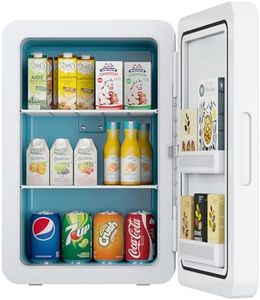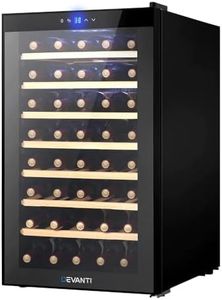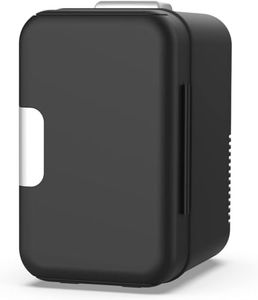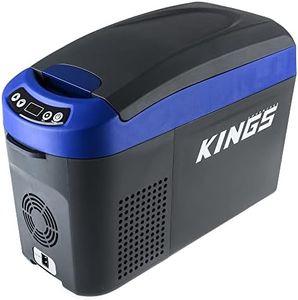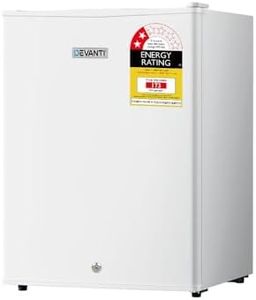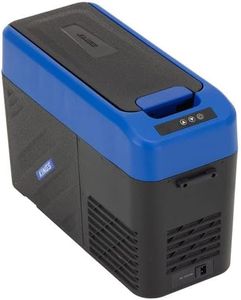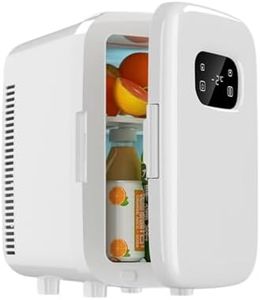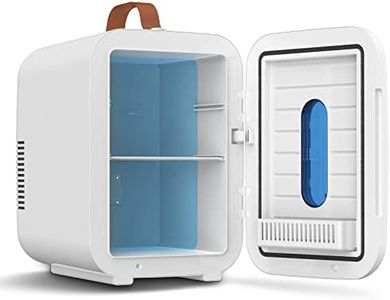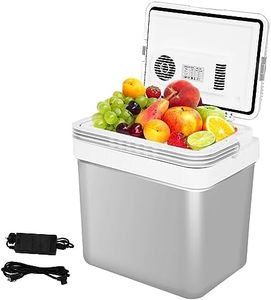We Use CookiesWe use cookies to enhance the security, performance,
functionality and for analytical and promotional activities. By continuing to browse this site you
are agreeing to our privacy policy
10 Best Portable Mini Fridge
From leading brands and best sellers available on the web.Recommended lists
Buying Guide for the Best Portable Mini Fridge
Choosing a portable mini fridge is all about matching the fridge’s features and size to how and where you want to use it. Whether it's for road trips, dorm rooms, offices, bedrooms, or camping, you’ll want to think about what you’ll store in it, how often you’ll move it, and where you’ll be plugging it in. Focus on the specs that affect space, portability, and how well it keeps things cool to make sure you’ll get the most use out of your mini fridge.Capacity (Liters or Quarts)Capacity tells you the total amount of internal storage space inside the fridge, usually measured in liters or quarts. This is important because it determines how much food or drink you can store at once. Small capacities (4–8 liters) are enough for a few cans or some snacks, making them great for personal use or on-the-go situations like car rides. Medium sizes (8–20 liters) can store multiple drinks and some food items and work well for small offices or dorms. Larger portable fridges (20–40 liters) hold enough for a couple days of supplies, which can be ideal for camping or road trips with family or friends. Think about the number of items and the kind of products you most often need cooled to decide how much space you’ll want.
Portability (Weight and Handles)Portability refers to how easy it is to carry and move the fridge, and it's mainly affected by weight and whether the fridge has comfortable handles or straps. Lighter fridges are easier to carry and best for those planning to move the fridge frequently, like between vehicles or rooms. Heavier models may offer more storage or better insulation but are less handy for frequent lifting. If you want to regularly transport the fridge, look for side handles or a top handle that feels sturdy and balanced. Your main use (stationary vs on-the-go) should dictate whether weight and carrying options are a major focus.
Cooling System (Thermoelectric vs Compressor)The cooling system is what keeps the contents cold. Thermoelectric fridges are lightweight and quieter, but typically can only cool to around 20°C below room temperature, which is fine for drinks or snacks if you’re mostly in moderate climates. Compressor fridges, on the other hand, work more like a traditional refrigerator and can cool much lower, even to freezing. They’re a bit heavier and might be noisier, but are better for storing perishables or for use in hot climates. Choose based on whether you need deep cooling and whether you’ll store things like dairy or raw foods versus just beverages or snacks.
Power Source (AC/DC and USB Compatibility)Portable mini fridges can often be powered by standard wall outlets (AC), car adapters (DC), or even USB for very small models. If you plan to use the fridge both at home and on the go, getting one with both AC and DC compatibility is useful. For travel or camping, pay attention to whether it can run from your vehicle’s 12V socket. USB-powered fridges are usually very small and only suitable for keeping one or two drinks cold. Your main locations of use should influence which power options you need.
Temperature Range and ControlThe temperature range tells you the lowest and highest temperatures the fridge can maintain, and whether you can adjust it. Some fridges have fixed temperatures, while others let you set your preferred coolness. Fridges with a wider temperature range or adjustable controls offer more flexibility, helpful if you want to store a variety of items (like medications, snacks, or skincare products). If you’re mostly using it for simple drinks, a basic cold setting may be enough, but for more sensitive items, look for more precise control.
Noise LevelMini fridges can make noise from their fans or compressors. Noise level is important especially if you’ll keep it in your bedroom, office, or a shared space where quiet is needed. Thermoelectric models usually run quieter than compressor models. Check for descriptions like ‘silent’ or ‘low-noise’ if noise sensitivity is a concern. Think about your intended environment when deciding how much noise matters for you.
